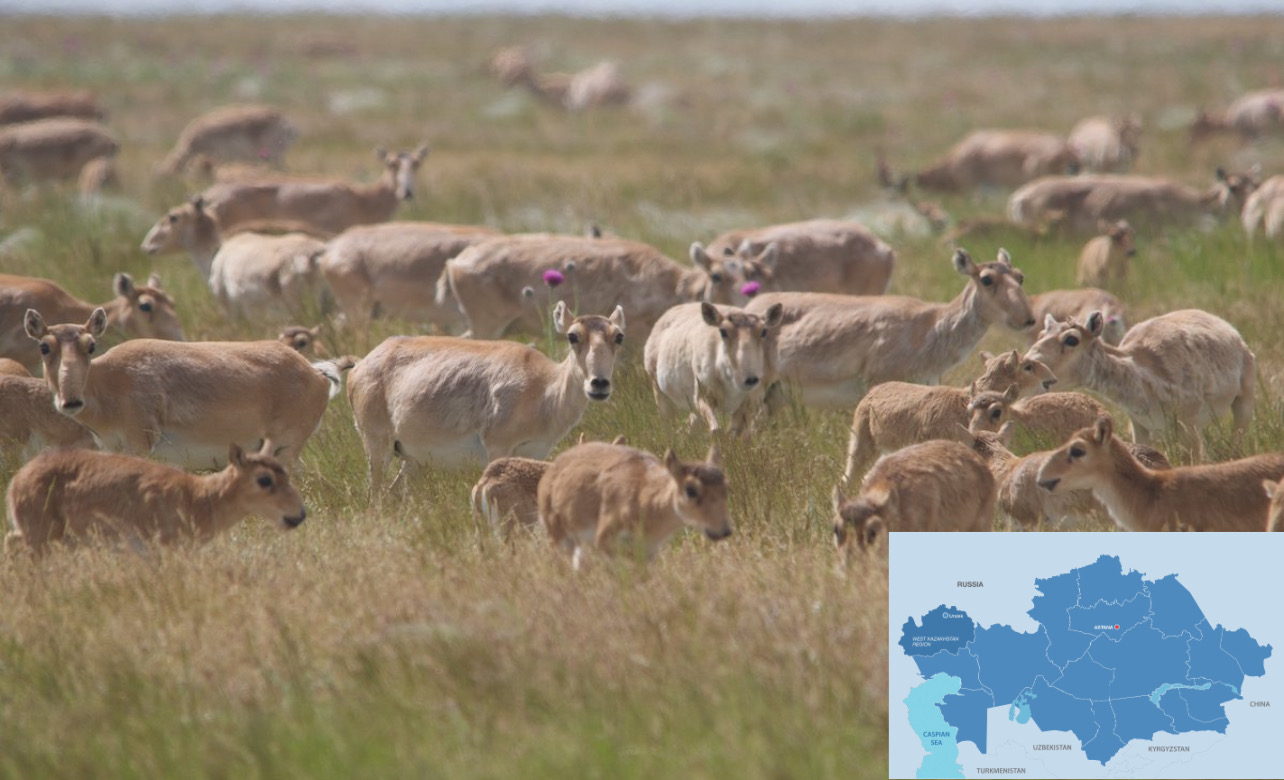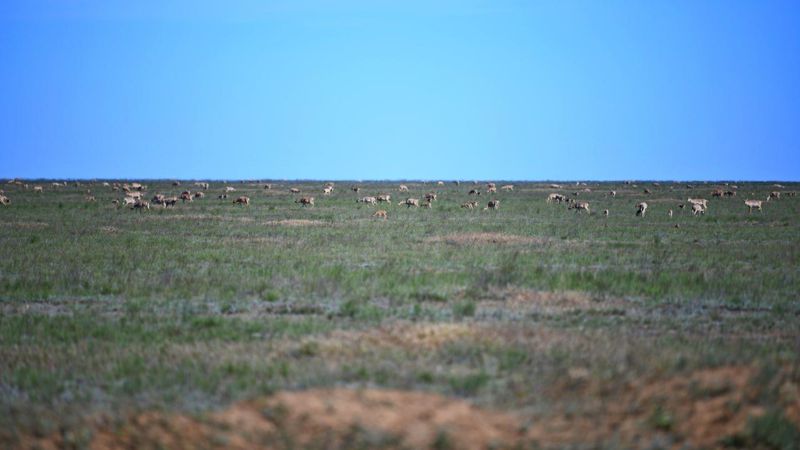ASTANA – While the growing population of the saiga antelopes in Kazakhstan can be considered an ecological success, their increasing number is also having a negative impact on agricultural land. To tackle this, the Kazakh Ministry of Ecology and Natural Resources has proposed to transfer 120,000 hectares of land to the Bokeyorda Reserve located in the West Kazakhstan Region and to develop a system to compensate farmers for any damages.

Photo credit: Rob Field/Royal Society for the Protection of Birds. Click to see the map in full size. The map is designed by The Astana Times.
The saiga is listed as a critically endangered species by the International Union for Conservation of Nature. From 1992 to 2003, their number decreased from one million to just over 20,000 due to poaching and hunting. Kazakhstan banned saiga hunting in 1999.
Almost two-thirds of the saiga population in Kazakhstan was lost in 2015 due to the spread of pasteurellosis, a zoonotic disease.
Since then, the Kazakh scientists have taken measures to restore the population with significant success.
According to the ministry, there are more than two million saigas as of April (before the birthing season), including over 1.2 million in the Ural area in northwestern Kazakhstan. It is projected that there will be 2.8 million saigas by the end of the year, including 1.6 million in the Ural.

Photo credit: press service of West Kazakhstan Region.
The ministry said the area where saigas traditionally graze is shrinking. Over the past 15 years, the nature reserve area in the West Kazakhstan Region has been reduced by half from 7,856 hectares in 2008 to 3,720 hectares in 2022 due to increased agriculture. Saigas tend to return to their permanent habitats, which is why their concentration on the farmers’ lands has increased.
The growth of the saiga population and its impact on the agricultural sector has been widely debated in Kazakh society.
The ministry proposed to the region’s akimat (governor’s office) to transfer approximately 120,000 hectares to the Bokeyorda Reserve, created last year. This territory can provide a natural space for around 90% of the saigas of the Ural population during the birthing season.
President Kassym-Jomart Tokayev also proposed to resolve this issue at an expanded government meeting in July 2022.
According to the ministry, work is underway to find a solution as part of the roadmap, under which the number of the saiga population will be confirmed using an aerial survey by the end of May.

Photo credit: Yakov Federov.
International experts have also been involved in the work. The first part of the consultations took place from Feb. 28 to March 1 with experts from the Convention on Migratory Species, Convention on International Trade in Endangered Species of Wild Fauna and Flora, the International Union for Conservation of Nature to develop recommendations for the management of the saiga population.
International experts are scheduled to visit Kazakhstan again on May 20-28, including for the final part of the consultations on May 24-28.
The approved recommendations will be used in the biological rationale for the management of saiga populations, which is being developed by the West Kazakhstan Agrotechnical University with the ministry.
Several issues will be assessed under this framework, including estimates of the growth of the saiga population, habitat and migration routes, food resources, ways to reduce damage to agriculture, the use of saigas for sports, as well as for amateur and commercial hunting and ecological tourism.
National and regional offices have been established to coordinate work on preventing damage to agriculture.
Scarecrows have been placed along a 40-kilometer perimeter in the Bokeyorda Reserve. Inspectors also patrol the territory to contain the number of saigas in the area.
According to the ministry, artificial watering holes will be created to establish natural conditions for the saigas in the Bokeyorda reserve. Two watering holes are expected to be built by the end of the year, and the location for 15 more is being determined.
The ministry also noted the need to develop a system to calculate the damage caused by wild animals to agricultural lands and consider the issue of paying compensation to farmers.


